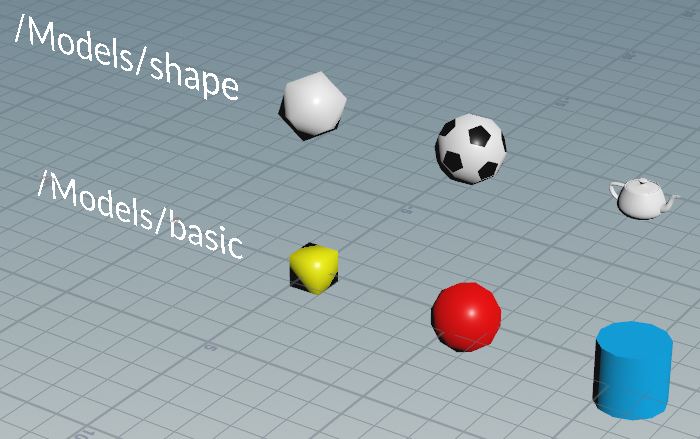| On this page |
Layout ¶
-
The physics-based placement in the
Edit LOP is now optimized for faster interactive layout in large scenes.
-
You can now edit instanceable references and local transforms in the
Edit LOP.
-
The
Mask From Bounds LOP assigns a primvar to any prims within a bounding box. This lets you apply other nodes only to those prims.
-
The USD plugin for
.bgeofiles can now handle compressed formats (.bgeosc,.bgeogz,.geosc,.geogz).
-
The
Explore Variants LOP lets you view and choose from the geometry variants available on a prim in the viewer.

FX ¶
-
Significantly faster
retiming of instances.
-
The
RBD Destruction LOP node is an example of how to a fracturing simulation in USD, as well as a useful effect.
-
The
Geometry Sequence LOP makes it easy to load a sequence of
.bgeofiles as animated USD geometry.
-
The
HDA dynamic payload LOP makes it easy to generate animated USD geometry from a digital asset.
-
You can now import crowd agents as UsdSkel prims.
Shading ¶
-
20× faster shader translation performance.
-
Streamlined shader authoring.
-
OSL shader authoring in VOPs.
-
In the shader specialization workflow, the spare parameter
shader_skipchildrenis now calledshader_forcechildren, with the opposite meaning.
-
New imaketx command-line utility creates mipmapped
.exror.rattextures from image files. -
USD material referencing workflows.
-
Added VEX functions for working with USD namespace paths. See usd_boundmaterialpath, usd_collectioncomputedpaths, usd_iscollectionpath, usd_makeattribpath, usd_makecollectionpath, usd_makepropertypath, usd_makerelationshippath, and usd_parentpath.
-
VEX is now up to 40× faster working with USD arrays.
-
Promoting a VOP input that corresponds to a parameter will now properly promote that parameter’s tags.
Lighting and rendering ¶
See also what’s new in the Karma renderer.
-
The
Light Mixer now puts lights created from the mixer in a subnet. You now can select a light in the mixer and use the light handles to edit the light in the viewport.
-
You can now edit transforms in the
Light Mixer and
Edit LOP spreadsheets.
-
The Render Gallery lets you snapshot IPR renders and their associated LOP network settings.
-
Display settings in the Solaris viewer are now per-render delegate.
-
Improved support for light projection maps.
-
Houdini’s nodes for creating lights can now add barn doors, with interactive handles in the viewer for controlling them.
-
Dedicated
Distant Light LOP for sunlight.
-
USD-conforming Dome Light environment maps.
Husk is Houdini’s command-line wrapper to drive Karma (and other render delegates) in batch processing.
-
Husk can now do progressive rendering to MPlay.
-
MPlay can now monitor the output of Husk rendering to disk.
-
Husk can now output detailed render diagnostics. See the
--usd-traceand--usd-chrome-fileoptions. -
Husk can now execute pre-render and post-render Python scripts.
-
Husk now supports tile rendering.
-
You can now click in the viewer/Mplay to target that area for progressive rendering.

User experience ¶
-
The Solaris viewer now batches up separate small geometry primitives and sends them to the graphics card as one piece. This can can give incredible speed-ups for drawing and interactive tumble of scenes with many small prims (for example, leaves on a tree).
-
Improved multi-shot workflows with
insertion points and
Graft Branches.
-
Fine-grained performance tracking of LOP cooking.
-
The Scene Graph Details pane can now show the properties of selected prims in a spreadsheet view.
-
In the scene graph tree, the Descendants column shows how many prims exist under each prim. This can help identify where the complexity is in a big scene.
-
In the scene graph tree pane, you can now press MMB on a prim to show an info window for that prim, similar to the info window in the network editor. Press ⌃ Ctrl + MMB to open a pinned window.
-
The scene graph tree pane has a new sub-pane where you can build and save selection rules. You can then use them to select prims, or as virtual collections in LOP nodes.
-
The USD view no longer displays LOP stages embedded inside Object or SOP networks in the LOP network.
-
In combination with the
Loft Payload Info LOP, the Solaris viewer can display bounding boxes for unloaded payloads, making it much easier to visualize large scenes.
-
Primitive pattern matching is now more powerful, with computed “auto collections”. For example,
%bound:/cameras/shotcamis a virtual collection containing everything visible to theshotcamcamera.%rule:rulenamecontains everything that matches a saved pattern rule.%type:nameand%kind:nameare easier to use and faster than using the inline VEX test syntax. You can even add your own custom auto collection type using the HDK. -
Full support for USD 20.08.
-
LOP path support for USD packed primitives.
-
More flexible export of
.usdfiles withUSD ROP.
-
It is now possible for a LOP network to have no display flag set, in which case the viewer shows the output of the closest ancestor network that does have a display flag. This allows you to dive into subnetworks but still see the output of the parent network in the viewer.
-
Selection of instances in the viewer now just works, even in very complicated instancing setups.
-
Fixed a bug in the
USD Render ROP where it would not update path references to other USD files.
-
Many other enhancements across the board.